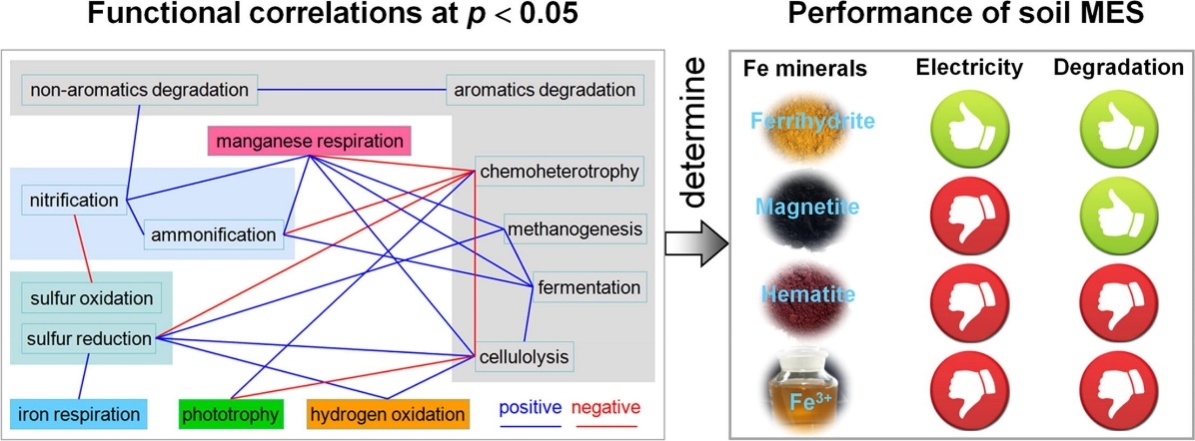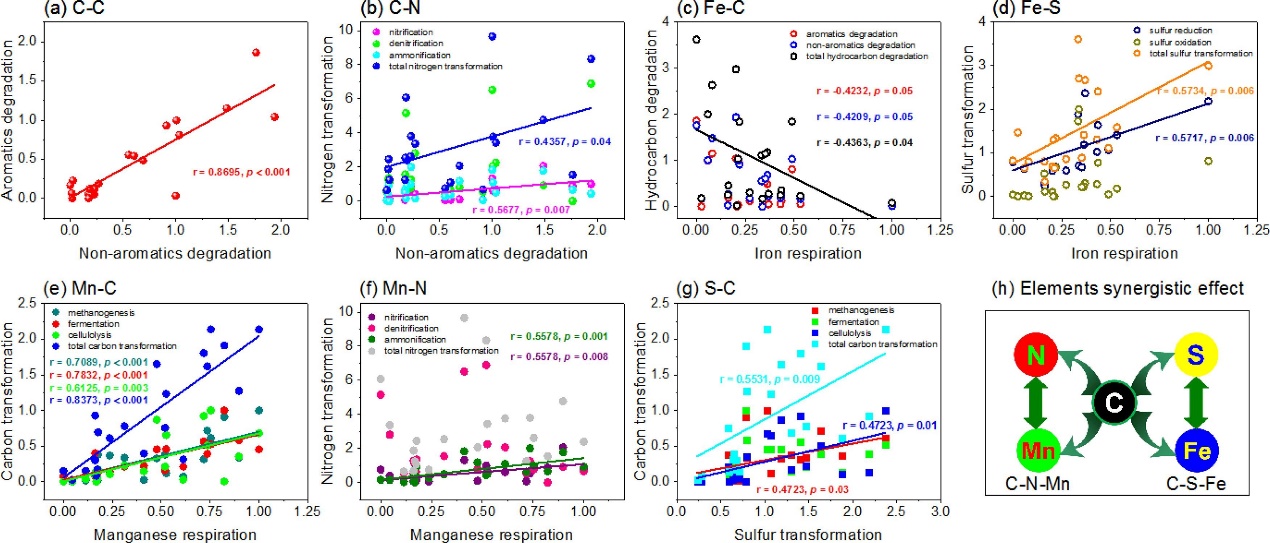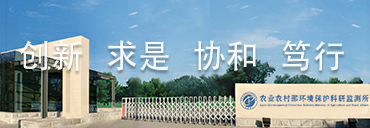Chemical Engineering Journal: 绝缘的水铁矿也能促进土壤生物电流传导?
作者: 来源:农田有机污染生物消减创新团队 2022-10-21
Chemical Engineering Journal: 绝缘的水铁矿也能促进土壤生物电流传导?

农业农村部环境保护科研监测所农田有机污染生物消减创新团队在Chemical Engineering Journal杂志发表题为"Ferrihydrite enhanced the electrogenic hydrocarbon degradation in soil microbial electrochemical remediation"的研究成果。
农业农村部环境保护科研监测所硕士研究生陈晓东和韩婷为论文共同第一作者,李晓晶研究员和李永涛教授为论文共同通讯作者。本研究得到了国家自然科学基金(41977133和41601536)、天津市自然科学基金(20JCYBJC01590)和农业农村部环境保护科研监测所基础前沿项目资助。
doi: 10.1016/j.cej.2022.136901
Highlights
Effect of iron minerals on the efficiency and functions of soil MES was assessed.
More electricity generation in insulative ferrihydrite treatment than magnetite.
More than 13000 mg·kg-1 of petroleum hydrocarbons were removed in soil MES.
Addition of iron minerals obviously reinforced the synergistic effect of microbes.
Relations between functional gene richness and eleven iron states were revealed.
Abstract
Iron transformation determines the exoelectrogen activity and electron transfer and thus the bioelectricity generation and the contaminant degradation in soil microbial electrochemical remediation. Herein the addition of soil microbe with (semi)conductive, insulative iron minerals and ferric iron degrades the petroleum hydrocarbons under the biocurrent stimulation. The hydrocarbon removal increased by 74% in ferrihydrite treatment compared to the control. Next to magnetite treatment that was superior to hematite and ferric treatments. The accumulated charge was ferrihydrite (1964C) > control (1698C) > magnetite (1587C) > hematite (1405C) > ferric (1108C) after 148 days. The efficiencies of hydrocarbon degradation and electricity production were ascribed to the soil functions determined by substance transformation genes. Based on the correlation analysis between eleven iron states and functional genes richness, organotrophic dissimilatory iron reduction and short-distance conduit were the main enhancement ways on the system performance. Meanwhile, conversions of nitrogen, sulfur and manganese exhibited a synergetic coupling relationship with the carbon metabolism. This work comprehensively revealed the transformation of iron states and their effects on ecological functions of soil microbial electrochemical system.
Graphical abstract

铁作为地壳中最活跃的金属元素,在生物地球化学物质转化中发挥着重要作用,对土壤微生物电化学系统(MES)中有机物的去除、微生物群落演化和功能基因表达以及其他元素转化过程产生潜在影响。本文通过设置添加磁铁矿(Mag)、赤铁矿(Hem)、水铁矿(Fer)、三价铁(Fe(Ⅲ))以及无添加处理(CK)这五个处理组,揭示了外源铁在土壤MES中的转化及对生物产电和石油烃降解的影响。
在土壤生物电流刺激下,添加绝缘体铁氧化物水铁矿比(半)导体铁氧化物磁铁矿和赤铁矿更能提升土壤MES的石油烃降解和产电性能。与未添加铁氧化物的闭路组相比,Fer组石油烃去除提高了74%,而相应的开路提高了156%,同时产电量提升了16%(图1)。Mag组的降解率仅次于Fer,随后是Hem和Fe(Ⅲ)组。虽然Mag组的初始电压较高,但148天后累积电荷为Fer(1964 C)> CK(1698 C)> Mag(1587 C)> Hem(1405 C)> Fe(Ⅲ)(1108 C)。烃降解与铁氧化物电导性之间的不一致归因于物质转化基因决定的土壤功能。根据11种铁的形态与功能基因丰度的相关性分析,推测有机营养型异化铁还原和短距离电子传递决定着系统性能。同时,基于功能基因的显著相关性表明氮、硫、锰的转化与碳代谢表现出协同耦合关系(图2)。本文全面解析了土壤MES中铁形态的变化及其对系统生态功能的影响。

图1 土壤中石油烃含量:TPH(a)、烷烃(b)、芳烃(c)和极性物质(d);阳极和阴极土壤中TPH(e)、烷烃(f)、芳烃(g)和极性物质(h)的含量。

图2 基于土壤微生物群落属水平丰度推定的细菌功能及其相互关系。













